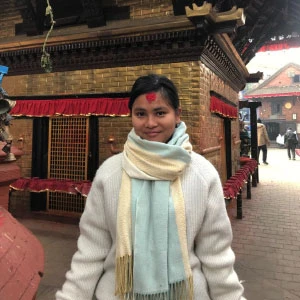Patan Durbar Square: The City of Fine Arts
Patan (Lalitpur) represents the creative soul of Nepal, while Kathmandu serves as its pulsating heart. Patan, the city of fine arts as it is known, also features magnificent architecture and its wooden crafts, as well as its temples that have proudly stood the touch of time over the centuries in the midst of a living, breathing city. The essence of this location is the Patan Durbar Square, a UNESCO World Heritage Site that is considered one of the most beautiful open-air museums in Nepal.
Walking into Patan Durbar Square feels like stepping into another age. The Mongolian red-brick courtyards, its stone streets, and golden temples sparkle with the past and godliness. However, it encompasses more than just monuments; it represents life itself. Locals will be found chatting on the palace steps, artisans making statues of metal, and children will be observed running up and down the shrines. This is what makes a place special, as Patan is not stuck in the past; it lives in the present.
Table of Contents
Interesting Facts of Patan Durbar Square
Facts | Details |
UNESCO's World Heritage Site | One of the seven monument zones of Kathmandu Valley listed by UNESCO. |
City of Fine Arts | Patan (Lalitpur) is famous for its master craftsmen in metalwork, stone carving, and paubha painting. |
Krishna Mandir | Built in the 17th century by King Siddhi Narsingh Malla, it is the only Shikhara-style stone temple with 21 pinnacles. |
Tusha Hiti | A sunken royal bath in Sundari Chowk decorated with intricate carvings of gods and mythical beings. |
Blend of Religions | Hindu temples and Buddhist monasteries coexist, symbolizing centuries of harmony. |
Stone Guardians | Temples and courtyards feature life-size stone lions, elephants, and mythical creatures at their entrances. |
Ancient Inscriptions | The pillar in front of Krishna Mandir has inscriptions in 15 different languages. |
Rato Machhindranath Jatra | The square hosts the grand chariot festival, one of the biggest events in Patan. |
Living Heritage | The square is still alive with daily worship, artisans at work, and vibrant festivals. |
Survivor of Earthquakes | Despite multiple earthquakes (including 2015), many structures still stand strong after restorations. |
Patan Museum | Located in a former royal palace, it is one of South Asia’s finest museums for Hindu and Buddhist art. |
Introduction
Patan Durbar Square, located in the heart of Lalitpur (also known as Patan), is one of Nepal’s most treasured cultural and historical landmarks. The name "Patan" refers to the ancient city, often called the "City of Fine Arts" for its rich tradition of craftsmanship. Meanwhile, “Durbar Square” translates to “Palace Square,” highlighting its role as the royal courtyard where kings once held court, ceremonies, and cultural events. This iconic square stands as a living testament to Nepal’s artistic heritage, showcasing centuries-old palaces, temples, and courtyards, and offering visitors an immersive glimpse into the city’s vibrant cultural and religious traditions.
History of Patan Durbar Square
Patan Durbar Square has a history that stretches back over 1,500 years, with its roots deeply embedded in the Malla period (12th–18th century). The square became a thriving center of art, culture, and religion under the Malla kings, who were great patrons of architecture, sculpture, and painting. Their vision transformed Patan into a city of unparalleled beauty, earning it a reputation as a hub of Newar craftsmanship.
The square served as the royal palace complex of the Malla kings of Lalitpur. Within its walls, kings conducted political affairs, royal ceremonies, and cultural celebrations. It was also a center for religious devotion, with temples and shrines built to honor Hindu deities and Buddhist figures alike, reflecting centuries of harmonious co-existence between the two faiths.
Over the centuries, the square witnessed the rise and fall of dynasties, earthquakes, and periods of restoration. Despite natural calamities, including the devastating 2015 earthquake, much of the square’s intricate woodwork, stone carvings, and metal statues have been preserved or carefully restored. This resilience has allowed Patan Durbar Square to remain a living heritage site, where locals continue to worship, artisans continue to craft, and festivals continue to bring the square to life.
The square also became a center for art and education, giving rise to Patan’s renowned schools of metalwork, stone carving, and paubha painting. Many of these traditional art forms continue to thrive, attracting scholars, artists, and tourists from around the world who wish to witness the extraordinary skills of Newar artisans.
Today, Patan Durbar Square is not only a historical and architectural marvel but also a cultural heartbeat of Lalitpur, inviting visitors to step into a world where history, art, and daily life coexist in perfect harmony.
Architecture
Walking into Patan Durbar Square feels like stepping into a living gallery of ancient architecture. Every temple, palace, and courtyard is a masterpiece, reflecting the craftsmanship of the Newar artisans who made Patan famous as the “City of Fine Arts.” The artistry here is not just decorative—it carries deep cultural and spiritual symbolism, blending Hindu and Buddhist influences into a harmonious whole.
Palaces and Courtyards
The Royal Palace Complex is the heart of Patan Durbar Square. Within its walls are exquisite courtyards that once hosted royal ceremonies and the daily life of kings.
- Mul Chowk – the oldest and most sacred courtyard, dedicated to Taleju Bhawani, the guardian goddess of Malla kings.
- Sundari Chowk—admired for the Tusha Hiti, a beautifully carved sunken water tank surrounded by mythological stone figures.
- Keshav Narayan Chowk—home to the famous Patan Museum, combining traditional palace charm with artistic exhibits.
Temples and Shrines
The temples surrounding the square showcase an incredible variety of architectural styles.
- Krishna Mandir—built entirely of stone in the Shikhara style, with 21 pinnacles and detailed carvings of Mahabharata and Ramayana scenes.
- Bhimsen Temple—dedicated to the god of trade and business, reflecting Patan’s historic role as a merchant hub.
- Hiranya Varna Mahavihar (Golden Temple) – a Buddhist monastery with gilded roofs, bronze statues, and prayer wheels, symbolizing the city’s religious harmony.
Artistic Elements
The square’s beauty lies in its intricate details:
- Woodwork—delicately carved windows, struts, and doorways featuring deities, mythical creatures, and floral motifs.
- Stone carvings—depictions of gods, animals, and epic tales carved into walls, pillars, and fountains.
- Metalwork—bronze and gilt statues that shine under the sun, revealing the metallurgical expertise of Newar artisans.
Together, these elements make Patan Durbar Square not just an architectural site but a cultural canvas where every brick and carving tells a story of devotion, artistry, and timeless heritage.
Festivals and Daily Life
Like Bhaktapur and Kathmandu, the Patan Durbar Square serves as both a monument and a hub for daily life. You will observe villagers laying flowers at temples early in the morning, sculptors carving sculptures, and the old people sitting and narrating things to each other. The square is in motion, so you are part of its pulse.
Festivals give life to Patan Durbar Square in the most colorful terms:
- Krishna Janmashtami: Krishna Janmashtami is observed by thousands of devotees by praying and enjoying Lord Krishna through music and lights in Krishna Mandir.
- Rato Machhindranath Jatra: This fetsival is the largest festival in the valley, commemorating the god of rain, and it fills the square with excitement.
- Indra Jatra and Other Local Deities—These are evidence of the harmony between Hindu and Buddhist religions within Patan.
If you visit Patan during a festival, you will have a better insight into the living traditions that still prevail in Patan today
Entry Fees and Visitor details
Patan Durbar Square is easily accessible for both domestic and international travelers and is open throughout the week. Visiting the square allows tourists to explore its magnificent palaces, temples, courtyards, and museums while soaking in the local culture and vibrant atmosphere of Lalitpur.
Entry Fee
- International Visitors: NPR 1,000 per person (approximately USD 8–9).
- SAARC Citizens: NPR 500 per person (approx. USD 4–5).
- Nepali Citizens: Free of charge, but a small donation is appreciated to support maintenance and restoration efforts.
The ticket fee includes access to the main areas of the square, including the courtyards and some temples. For those wishing to visit the Patan Museum, an additional entry fee is required:
Patan Museum Entry: NPR 1,000 for international visitors, NPR 500 for SAARC citizens.
Visitor Information
- Opening Hours: 9:00 AM to 5:00 PM daily.
- Best Time to Visit: Morning hours for fewer crowds and better photography; festivals like Rato Machhindranath Jatra or Indra Jatra for a cultural experience.
- Guided Tours: Available in multiple languages and highly recommended to fully understand the historical and artistic significance of the square.
- Photography: Allowed throughout the square, but drones may require special permission.
- Facilities: Nearby cafes, souvenir shops, and rest areas are available. Restrooms are limited but present at key points.
Patan Durbar Square remains a vibrant heritage site where visitors can witness centuries-old architecture, art, and traditions firsthand. Whether you’re exploring the temples, enjoying local cuisine, or shopping for handcrafted souvenirs, the square offers an unforgettable experience for all types of travelers.
Things To Do Around Patan Durbar Square
Although the square itself can easily take you several hours, you must not miss the alleys and neighborhoods surrounding it:
- Walk on the Ancient Lanes: Walk through the little lanes and alleys lined with old-fashioned Newari architecture and secret courtyards.
- Visit Craft Shops: Patan is renowned for its metalwork and carvings in wood. You are able to observe the craftsmen working and also purchase original souvenirs right from the craftsmen.
- Snack on Newari Food: Sample such delicacies as bara (lentil fritters), yomari (sweet dumplings), and the signature Newari feast [Newari sampling or Newari bacchaati], Samay Baji.
- Rooftop Cafes: There are a lot of cafes in the square with a rooftop. Looking at the temples with a cup of tea in your hand is an experience you will never forget.
Conclusion
Patan Durbar Square is better than being evaluated as a monument; it should be regarded as a festival of art, history, and culture. Whether it is the stone grace and beauty of Krishna Mandir or the gilded glory of Hiranya Varna Mahavihar, there is the beehive life of the Patan Museum and the still courtyards of the palace life; each stride brings something exciting.
The real gem of Patan is the manner in which the past and the present are mixed. Stunning temples that are many hundreds of years old will tower next to busy markets, and ancient prayers will overlap with the modern talk. It is a site of harmonious coexistence of art and life.
Patan is not only history, but it is also an experience of art, culture, and life. Visit it and travel with Nepal Trek Adventure.








